If you are careless when preparing coffee, you will compromise on the taste. Even the best coffee beans get an interesting taste but not in a good way. So do yourself a favor and pick up our recipe for espresso in a portafilter.
Don't have a portafilter machine? To prepare it with the espresso maker, please click the link. For everyone else, continue below.
To properly prepare an espresso with a portafilter machine, you need the following equipment.
Equipment for making espresso
- Portafilter machine
- Espresso coffee grinder
- Coffee beans
- Tampers
- Fine scale
- Two coffee cups
- Preferably medium-soft water (3–6 °dH)
Everything there? Then let's get started!
Basically, lighter roasted coffee beans, for example our house blend Günter, are denser and therefore more difficult to grind. In addition, it is more difficult to remove particles from the ground coffee with the brewing water.
For a balanced extraction, such an espresso requires a very fine grind and the coffee particles are as uniform in size as possible.
1. Determine the amount of coffee for the portafilter
With a ratio of ground coffee to water of 1:2.25, we extract two espressos with 20 g each from 18 g of ground coffee. Please check how many grams of coffee fit in your portafilter and adjust the recipe according to the ratio of 1:2 ¼.
In any case, use the sieve of the double shot portafilter. This allows you to achieve a uniform extraction, which is hardly possible with the smaller single-shot sieves. If 18 g works well, start with that amount as a base.
2. Choose the right grind level
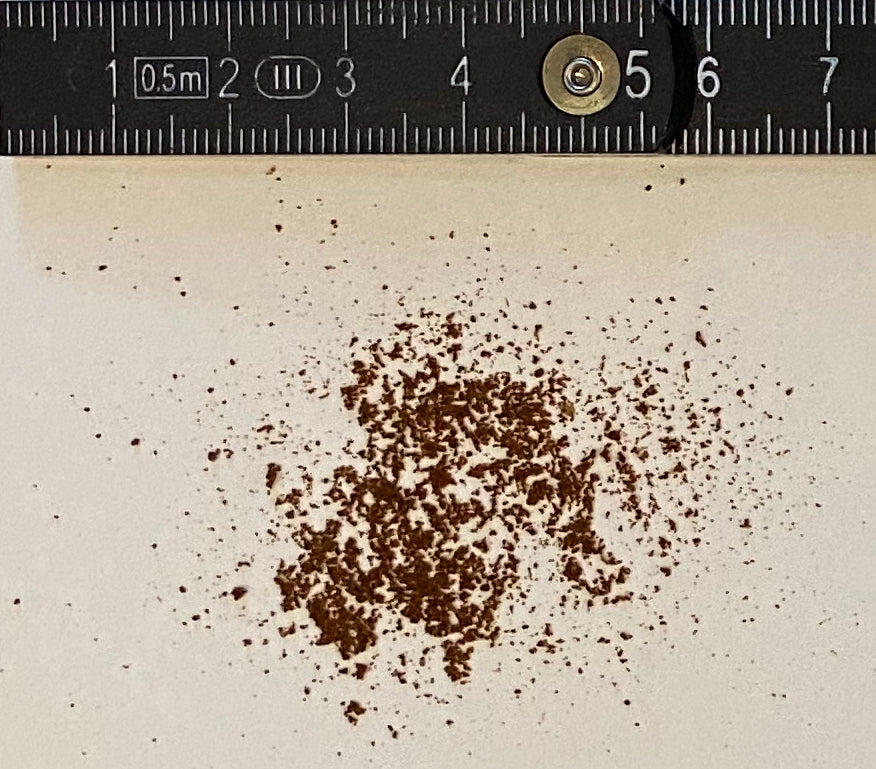
The correct grinding level for the portafilter machine with a meter measure as a reference point. The ground coffee is characterized by very finely ground particles that quickly tend to form lumps.
In order to achieve the desired extraction (approx. 20% dissolved particles from the coffee grounds), the correct grinding level is important. Adjust your grinder so finely that the contact time between water and coffee grounds releases enough particles from the coffee grounds. But there shouldn't be too many particles, otherwise the espresso will taste too bitter. It's worth experimenting a bit here.
For our lighter coffee beans, choose a grind that allows the extraction to take between 25 and 30 seconds until the desired 40 g of espresso has made its way into the cups. To do this, it is worth placing a precision scale under one of the cups.
3. Level and tamp the coffee powder
After the grinding process, we compact the ground coffee in the portafilter with the tamper. Make sure that the ground material is evenly distributed and flat (leveled) in the portafilter before pressing. The best way to do this is to lightly tap the portafilter with the flat of your hand, as you see in the cover photo of this article.
Tip: Never knock the tamper against the portafilter. This damages both instruments in the long run and quickly becomes a bad habit.
The contact pressure should always be the same when tamping because it has a major influence on the flow properties of the espresso. Whether it is a constant 8 kg or 15 kg is not that important. The main thing is that you press roughly the same amount each time.

The ground coffee in the portafilter after we have tamped it evenly.
4. How to extract your espresso correctly
Before you carefully clamp the portafilter, press the dispensing button once (so-called “flushing”) to remove coffee residue from the brewing group. With this method you can also reliably drain water that is too hot.
Once the portafilter is clamped, things have to be done quickly: Place the cups on a scale under the portafilter, set it to 0 (tare) and start the timer at the same time as starting the water flow. Once the 40 g of espresso has been extracted, stop the water and the timer. Now you can see how long your 40 g of espresso went through.

The espresso should flow evenly from the portafilter into the cup.
5. Try and taste coffee
Before you change a parameter, be sure to try and taste the result once. Take a small spoon, mix the crema with the espresso and sip the coffee, like cupping.
The acidity and sweetness should be balanced, the texture creamy and the aftertaste pleasantly long-lasting.
Are you satisfied ? Excellent! Are you not satisfied? Change individual parameters as described in point 6.
6. How to correct a sour or bitter tasting coffee
Does your espresso taste too thin, have sharp acidity and/or underrepresented sweetness? This indicates under-extraction. The brewing water has dissolved significantly less than the desired 20% of the coffee particles from your ground coffee. This can be changed by extending the extraction time. To do this, choose a finer grind with the same amount of ground coffee. Accurate weighing is essential here.
Caution: Depending on the grinder, a change in the degree of grinding will only become noticeable after 1 to 2 grinding processes. You can read more about how to set your coffee grinder correctly in our article on the dial-in for espresso.
Too much acidity in espresso can also be due to the water being too soft. If you have a water filter system with a permanent connection, you can try adding a little more raw water to the water as waste.
Over-extraction is particularly noticeable in terms of taste as too many bitter notes and a dry mouthfeel. In addition, there is an imbalance in acidity and sweetness, which we often find annoying. Analogous to under-extraction, it is then important to choose a slightly coarser grind.
Espresso as a basis for cappuccino etc
Many coffee fans with a portafilter machine like to drink their espresso with milk, for example as a cappuccino or flat white. To ensure that your coffee drinks have great taste, we have written instructions for you in our coffee preparation blog. We currently have articles for you to prepare milk coffee, cappuccino and flat white.
Tips and tricks for a perfect espresso
- Does changing the grinding level not bring any improvements? And even if you brew several coffees, do your taste preferences remain unfulfilled? Then it can help to address the ratio of ground coffee to extracted espresso.
- A second adjustment screw that you should keep an eye on is the temperature of the brewing water. The following applies here: the hotter the water, the more particles are released from the ground coffee. The temperature should ideally be between 93°C and 96°C.
- One of the most important influencing factors is the water that we use for preparation: an espresso consists of around 90% water. You can read how water hardness and the like affect the taste in our guide to coffee water.
- Last but not least: Remember to clean your portafilter machine and coffee grinder regularly! You can find the right cleaning products in our shop, including instructions!
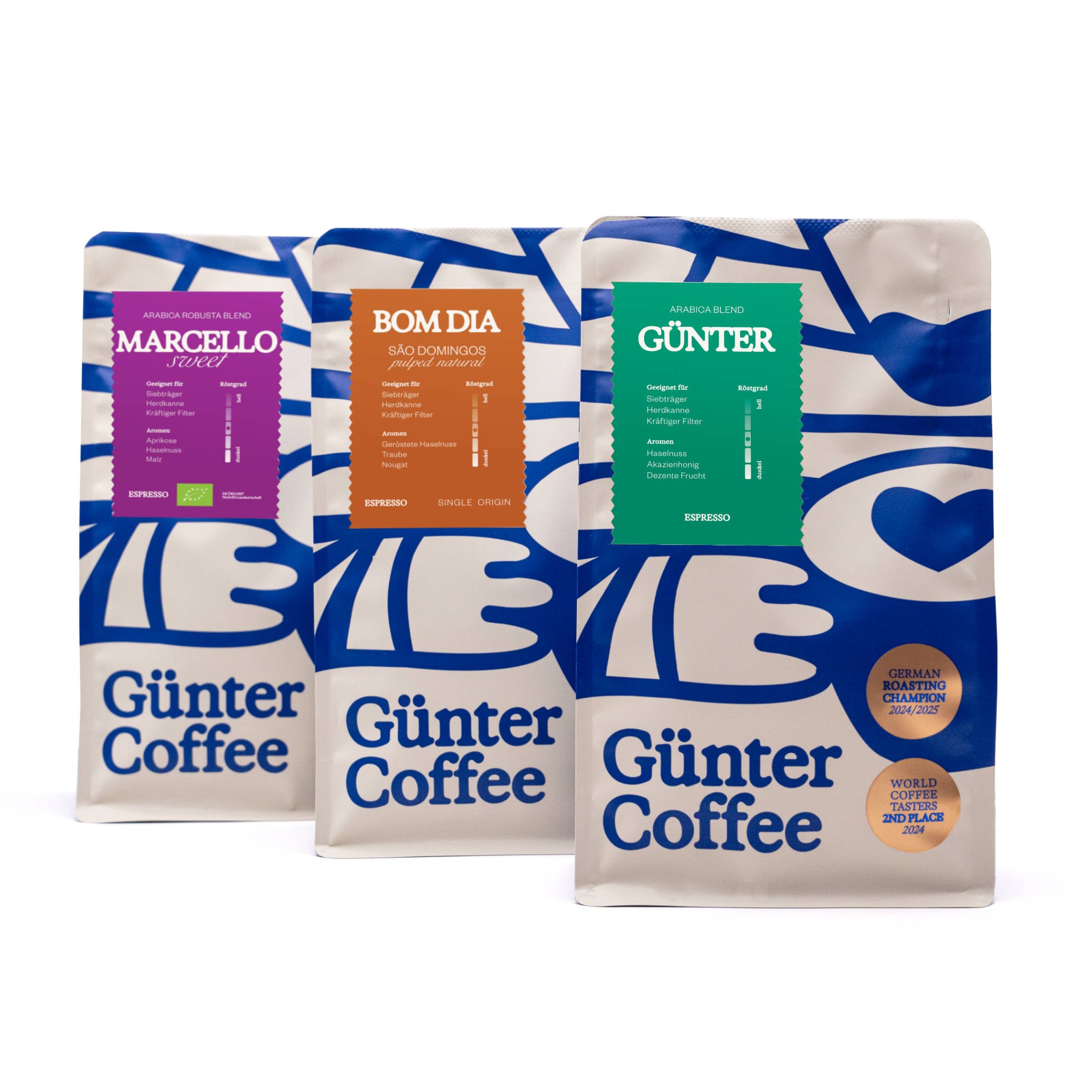

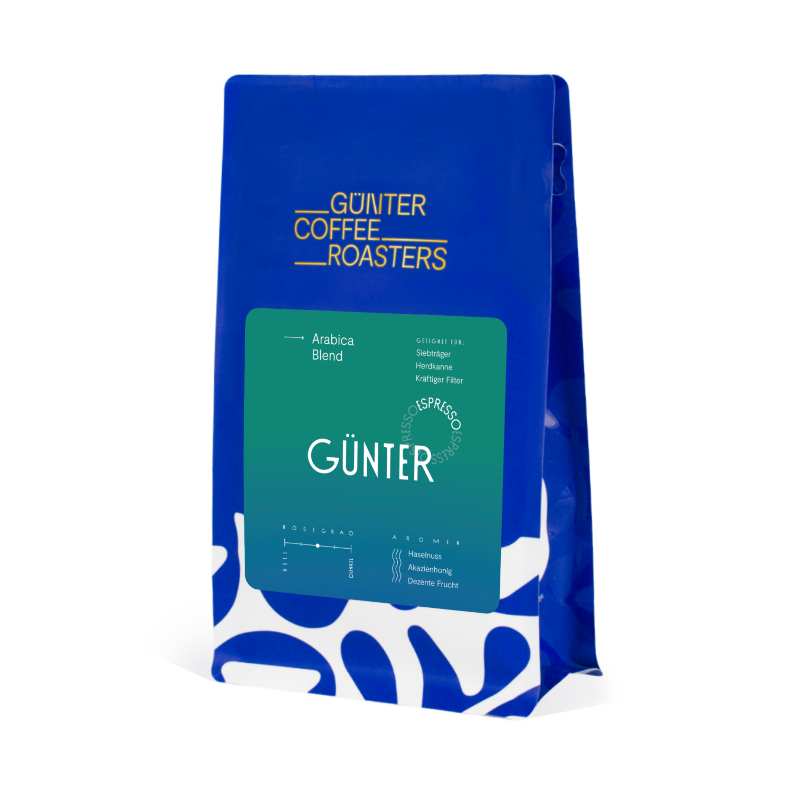



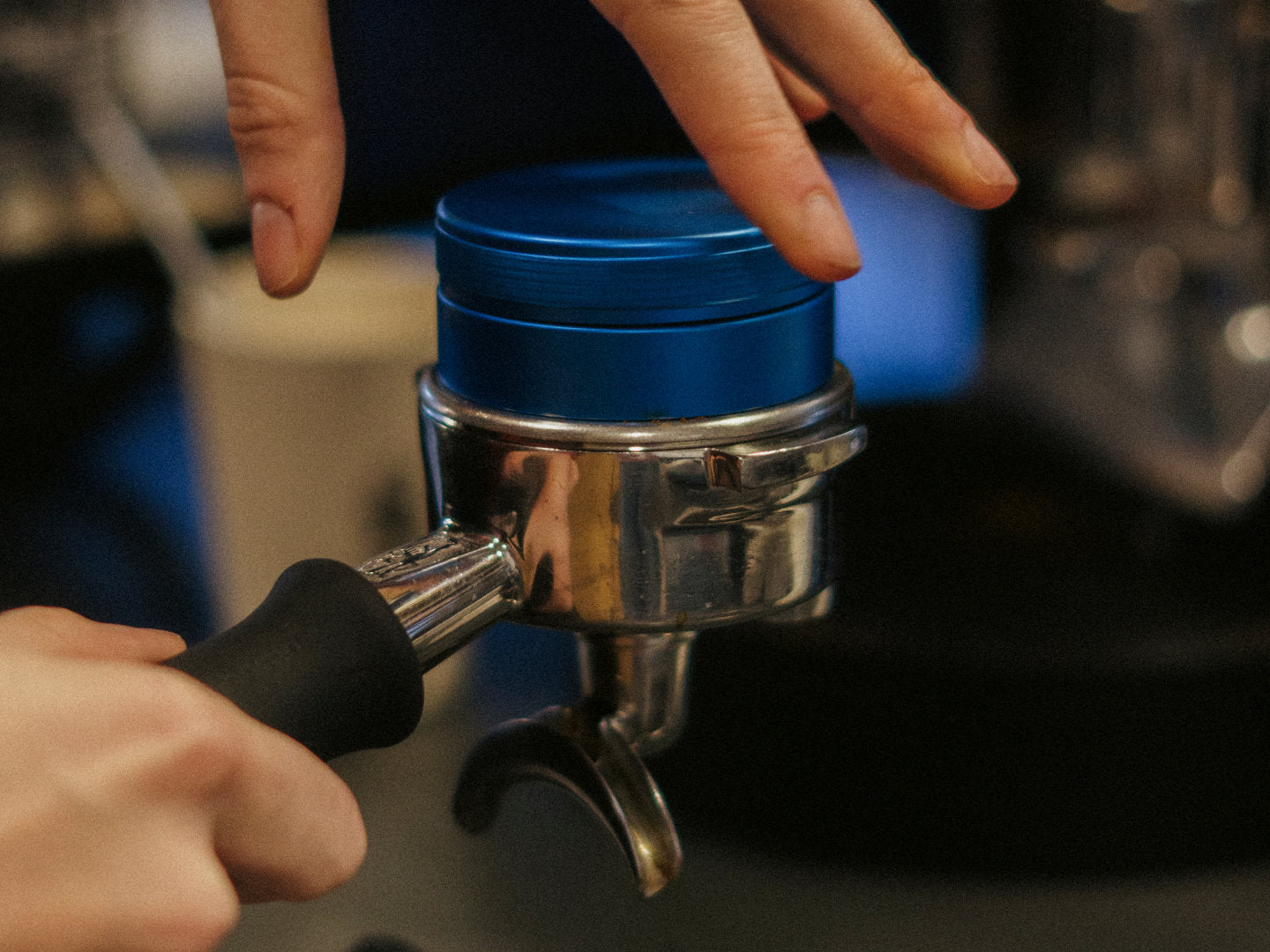

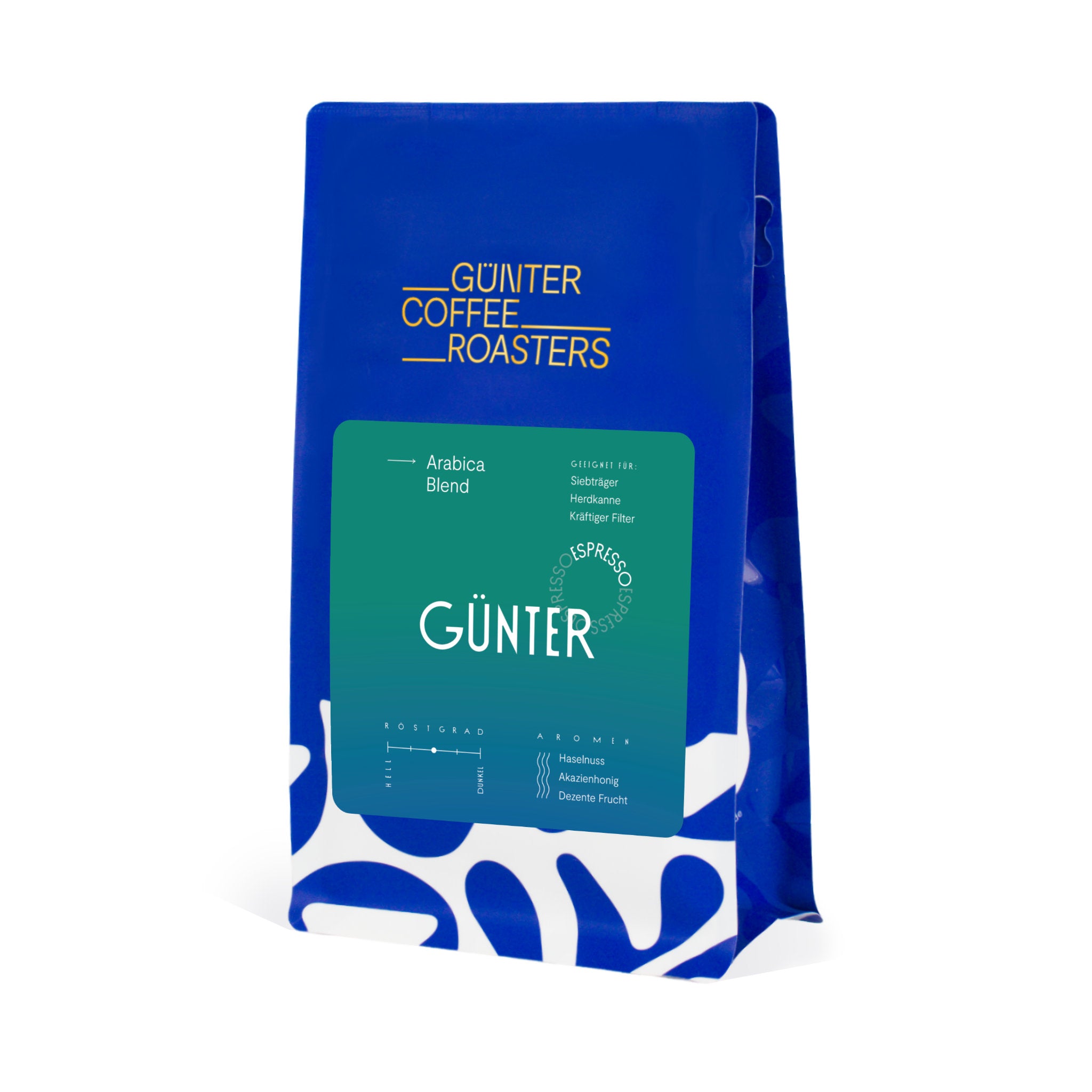

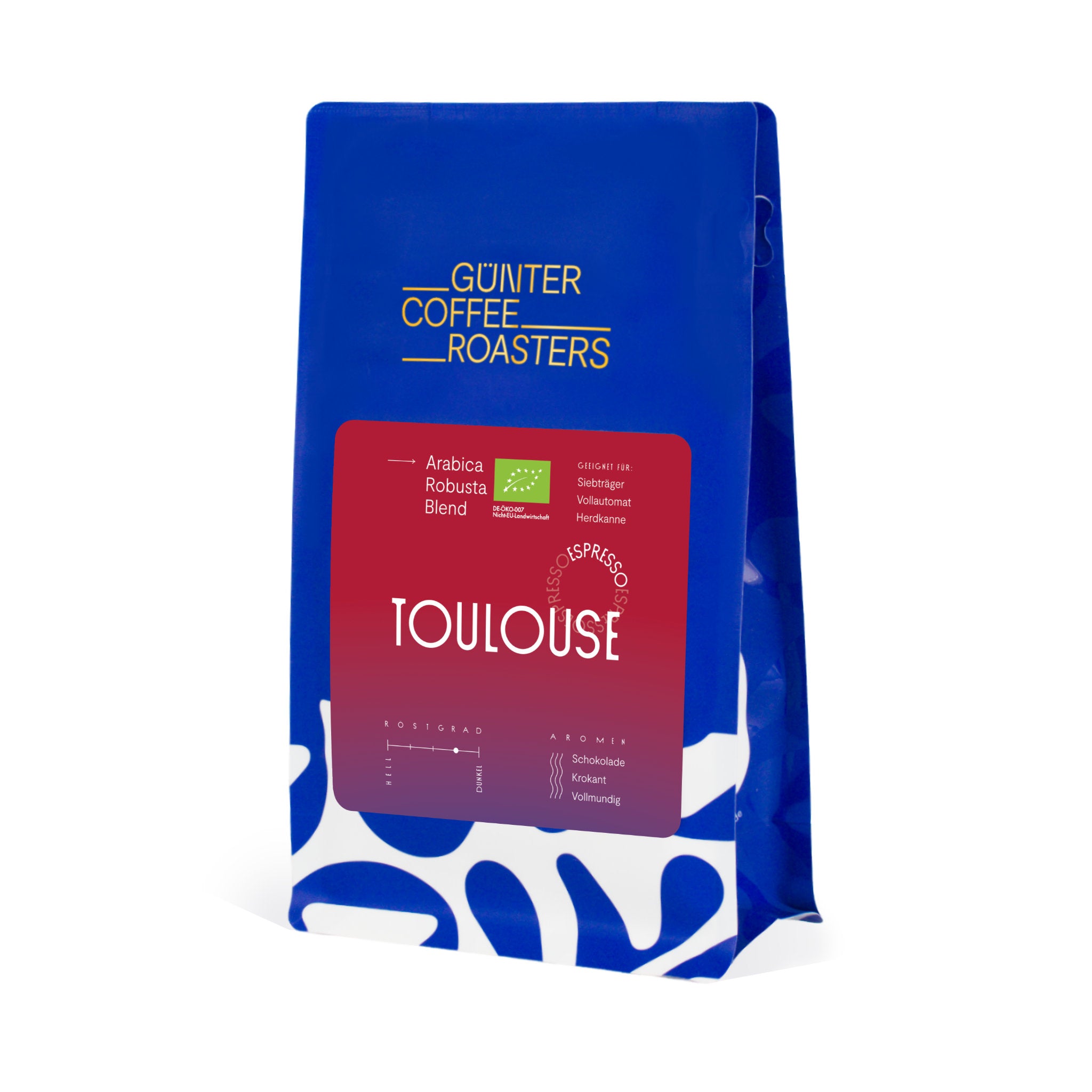
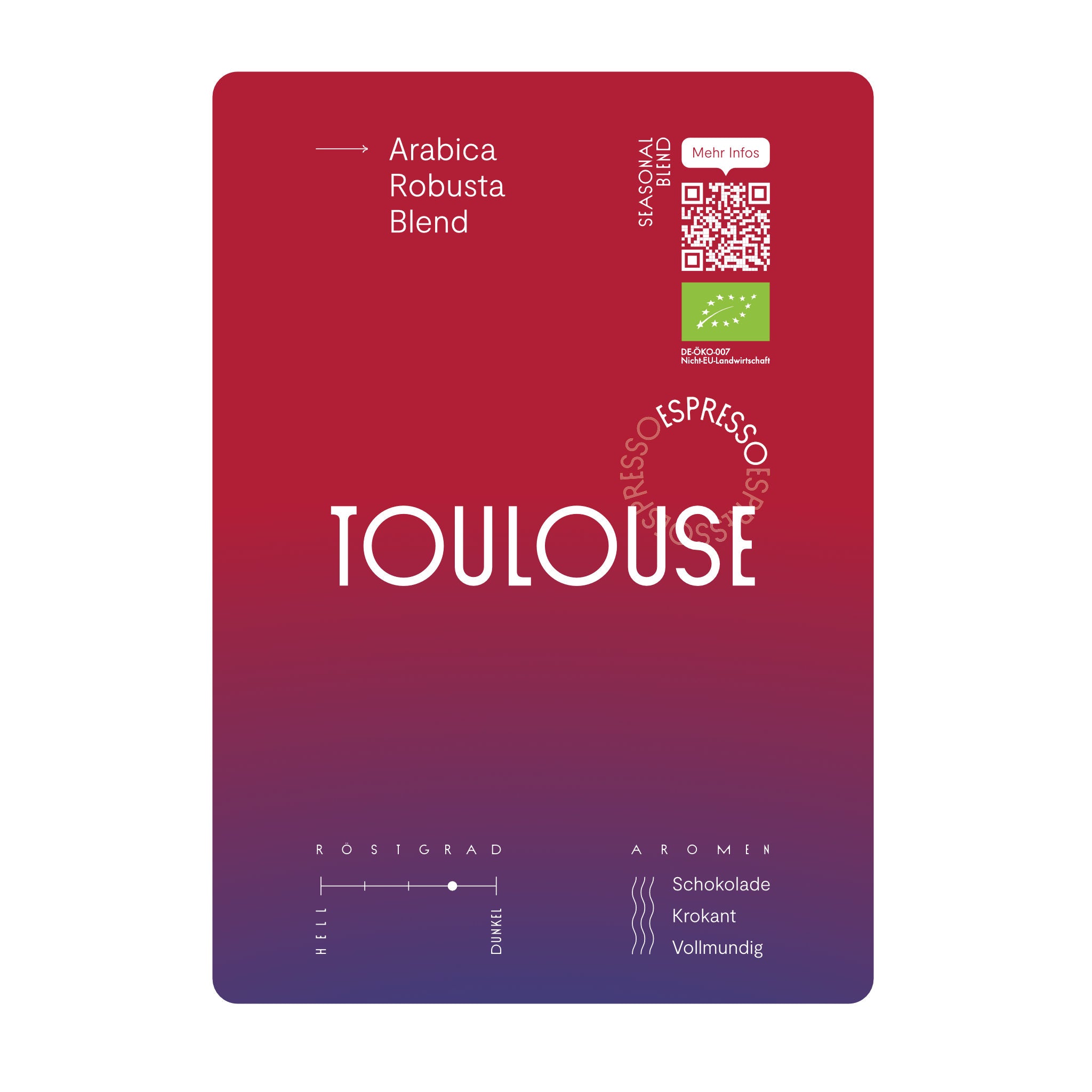
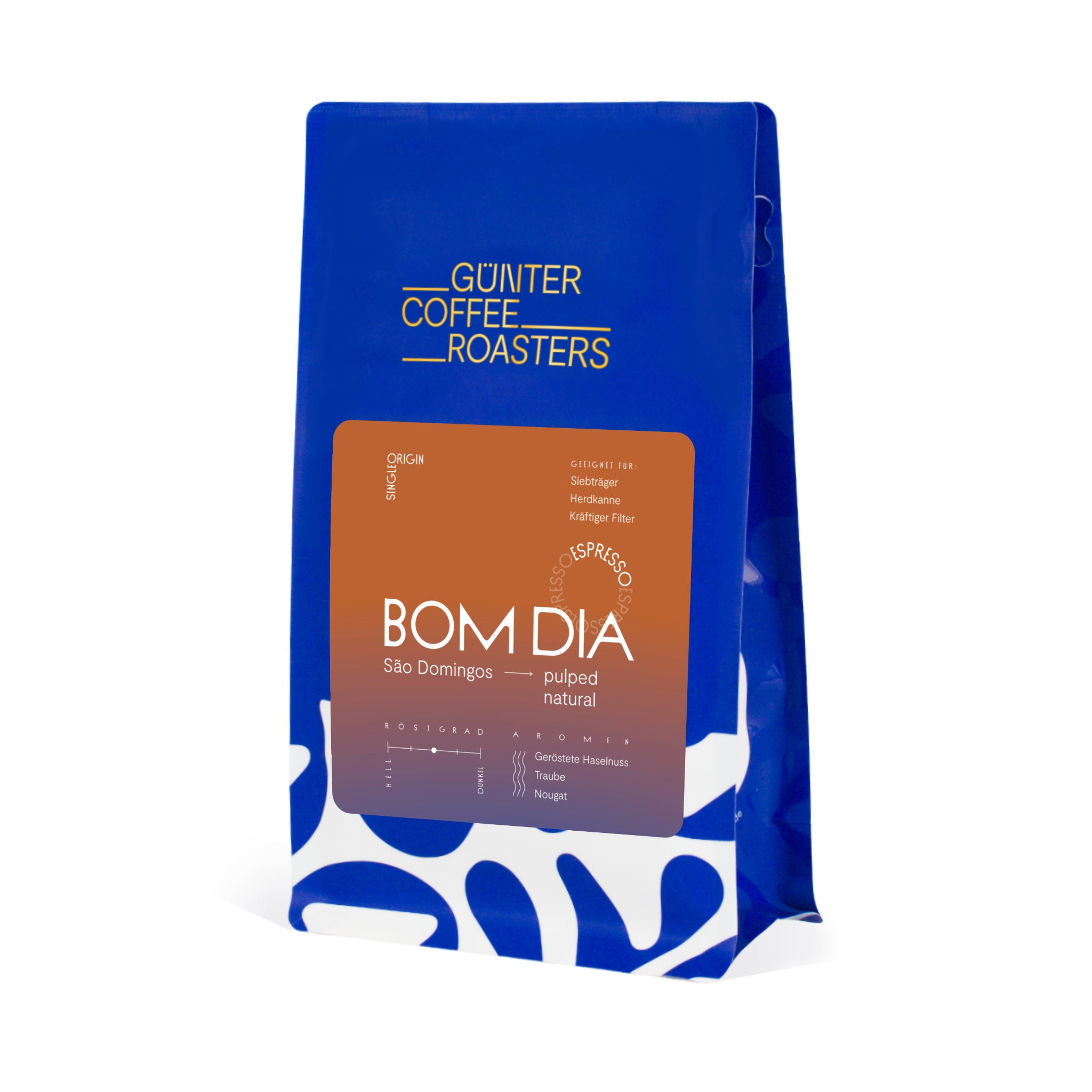
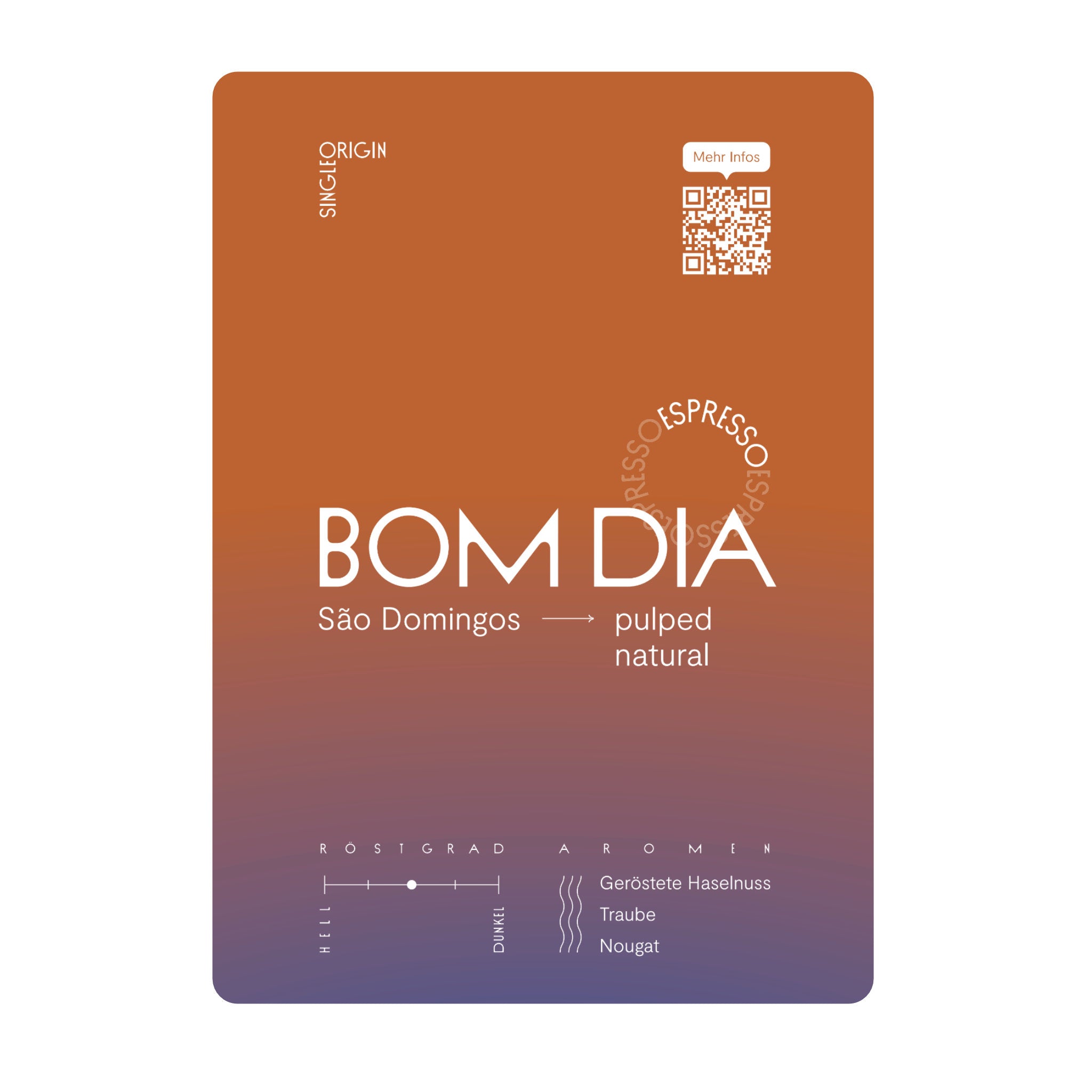




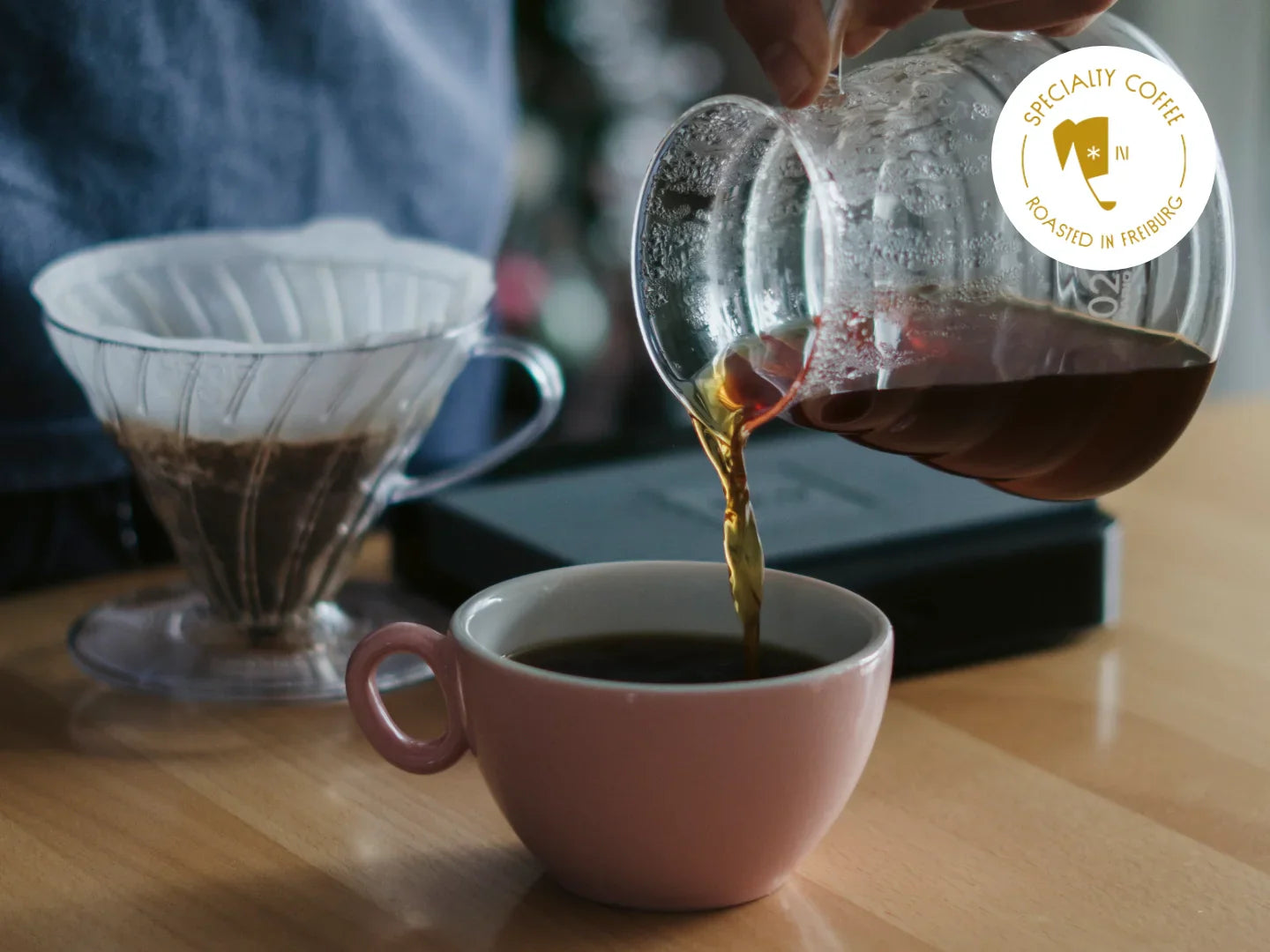




5 comments
Nico | Günter Coffee
@Dirk: Ein guter Espresso sollte etwas zähflüssiger als Wasser sein, aber nicht ganz so zäh wie Öl. Immerhin besteht er im Idealfall noch zu um die 90 % aus Wasser. Im Endeffekt kommt es auch stark auf die verwendete Röstung an. Sind die Bohnen sehr stark geröstet, ist auch der Espresso öl-artiger.
@Dirk: Ein guter Espresso sollte etwas zähflüssiger als Wasser sein, aber nicht ganz so zäh wie Öl. Immerhin besteht er im Idealfall noch zu um die 90 % aus Wasser. Im Endeffekt kommt es auch stark auf die verwendete Röstung an. Sind die Bohnen sehr stark geröstet, ist auch der Espresso öl-artiger.
Dirk
Hallo,
wie sollte ein guter Espresso sein, eher dünnflüssig (so bekommt man ihn ja oft serviert) oder dickflüssiger (wie Öl)?
Gruß Dirk
Hallo,
wie sollte ein guter Espresso sein, eher dünnflüssig (so bekommt man ihn ja oft serviert) oder dickflüssiger (wie Öl)?
Gruß Dirk
Nico | Günter Coffee
@Udo Liszio:
Lieber Udo, nach ein bisschen Einarbeitungszeit hat man den Dreh schnell raus und dafür besseren Espresso, es lohnt sich also. Bei welchem Punkt der Zubereitung hakt es denn?
@V.C.
Hallo, wir starten den Timer immer, nachdem wir den Bezugsknopf gedrückt haben.
@Udo Liszio:
Lieber Udo, nach ein bisschen Einarbeitungszeit hat man den Dreh schnell raus und dafür besseren Espresso, es lohnt sich also. Bei welchem Punkt der Zubereitung hakt es denn?
@V.C.
Hallo, wir starten den Timer immer, nachdem wir den Bezugsknopf gedrückt haben.
V.C.
Hallo, startet man die Stoppuhr sobald der erste Tropfen in der Tasse ist oder ab da wo man den Knopf drückt?
Dankeschön :)
Hallo, startet man die Stoppuhr sobald der erste Tropfen in der Tasse ist oder ab da wo man den Knopf drückt?
Dankeschön :)
Udo Liszio
Das hört sich slles sehr kompliziert an. Ich habe mir eine Siebteägermaschine gekauft und mache zum erstenmal Espresso.
Das hört sich slles sehr kompliziert an. Ich habe mir eine Siebteägermaschine gekauft und mache zum erstenmal Espresso.